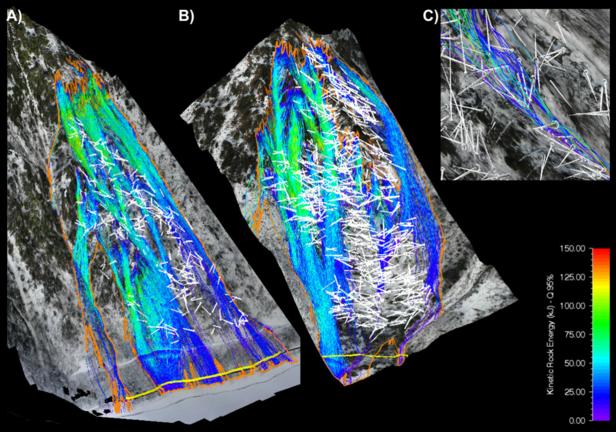The protection effect of standing trees in forests against rockfall is investigated and described in several studies being incrementally to integrated into hazard assessments and forest management. In contrast, the effect of lying deadwood is largely ignored because adequate modelling instruments are missing to date. Here, we introduce an automatic deadwood generator (ADG) to assess the impact of fresh woody storm debris on the protective capacity of a forest stand and ten years after the events. The creation of dead wood scenarios allows to directly quantify the mitigation potential via rockfall simulations. Alongside with a detailed presentation of the ADG functionality, we compare generated deadwood log patterns, the resulting effective deadwood height, and the ruggedness within two natural windthrow areas at Lake Klöntal, Glarus, Switzerland. The rockfall dynamics are simulated for the time a) before, b) directly after and c) 10 years after the storm for this prototypical case studies and d) compared with the scenario of a complete clearing of the thrown wood, resulting in a no forest scenario. We showcase an integration of deadwood in rockfall simulations with unprecedented detail incorporating realistic deadwood configurations alongside with a DBH- and rot fungi dependent maximal deadwood breaking energy. Our results confirm the mitigation effect of deadwood significantly reducing the jump heights and velocities for 400 kg rocks. Our modeling results suggest that even after a decade deadwood has still a stronger protective effect against rockfall compared to standing trees. An ADG can contribute to the decision making in forest and deadwood management after disturbances. The study also highlights the need for more research in order to precisely forecast the long-term effects of woody debris.

For further information, check the preprint paper here.